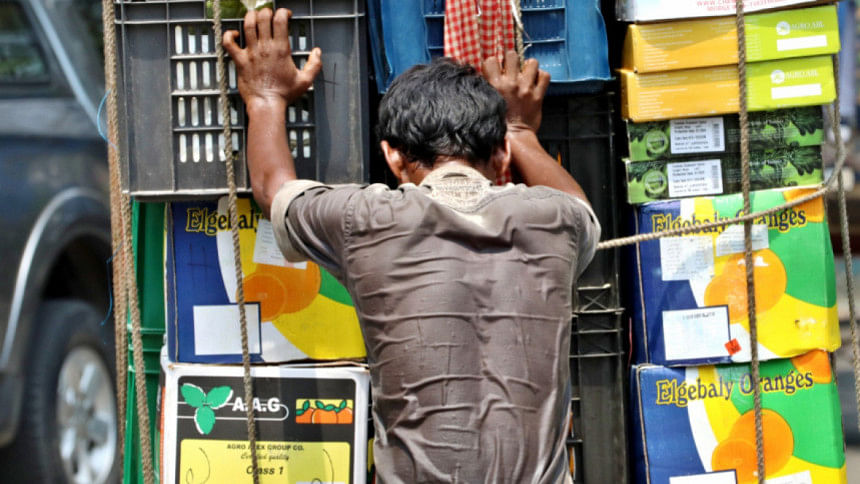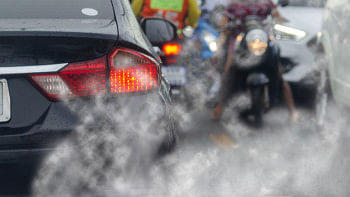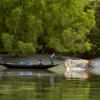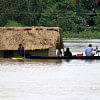Bangladesh’s current heat emergency and the roadmap to COP30

As the climate crisis escalates, Bangladesh faces a critical challenge in tackling the intensifying heatwaves in urban, peri-urban and rural areas, undermining health, agricultural productivity, and economic stability. With the upcoming 30th UN Climate Change Conference (Conference of the Parties—COP30) scheduled to take place in November 2025 in Brazil, least developed countries (LDCs) like Bangladesh need to address this emerging heat emergency by taking pragmatic and quick climate actions.
The Bangladesh Meteorological Department (BMD) has predicted more frequent occurrences of heatwaves in the coming decade. The intertwined crisis of rising temperatures and poor living conditions is generating worse conditions and impacting individuals and families living below the poverty line. For instance, informal sector workers working in poor working conditions, such as less ventilation, inadequate water booths, and minimal bathroom breaks, face an ample amount of dissatisfaction, which undermines their well-being. In this case, the ready-made garment (RMG) sector workers, mainly working in small and medium-sized companies, face these devastating challenges.
The smallholder farmers of drought-prone areas working in scorching heat with less access to drinking water are also heavily impacted during heatwaves. Additionally, marginalised women bear the disproportionate burden of extreme heat conditions, which deteriorate their health and well-being and reduce productivity. A 2022 report published jointly by the Bangladesh Red Crescent Society and International Centre for Diarrhoeal Disease Research, Bangladesh (icddr,b) revealed that due to heat stress, an individual from low-income communities spends an additional Tk 516 on healthcare annually; due to the current inflationary pressure, the cost has gone up significantly. Additionally, the report further stated that during an episode of a heatwave, an individual loses 3.12 hours in productivity.
Agriculture, one of the country's key economic sectors, also witnesses low rice yield due to extreme heat, resulting in a hike in food prices and a rise in poverty levels. Therefore, heat stress also undermines the economic viability and productivity of developing nations like Bangladesh.
While Bangladesh has made significant strides in climate policy, heat stress remains critically overlooked in national adaptation strategies. Therefore, integrating heat resilience into the National Adaptation Plan (NAP) is now imperative. Rather than a setback, this presents an opportunity for Bangladesh, as the country can leverage international climate finance to drive transformative adaptation. Long-term heat resilience also demands infrastructure reforms, including revised building codes, heat-resistant design principles, and expanded green infrastructure. India's Ahmedabad Heat Action Plan, which reduced heat-related mortality by 88 percent, offers a model that Bangladesh can look into.
By integrating policy, mobilising finance, and strengthening cross-sector collaboration, Bangladesh can effectively combat its escalating heat crisis and build a more climate-resilient future. However, a multi-sectoral approach is still essential and demands fostering collaboration among government ministries and departments, international non-governmental organisations, doctors and healthcare providers, and research institutions to implement capacity-building programmes and awareness campaigns. Alongside, ensuring frontline preparedness is crucial: healthcare workers and emergency responders must be trained to manage heat-related illnesses. Additionally, a localised and continuously monitored early warning system is essential for delivering timely heatwave alerts to communities that are at risk.
Heatwaves don't respect borders, and South Asia must unite to form a regional heat resilience pact. Countries like India, Pakistan, Cambodia, Vietnam and Bangladesh often face higher degrees and intensities of heatwaves. A "South Asian Heat Resilience Pact" could facilitate collaboration on managing these risks, integrating early warning systems, harmonising heat resilience measures, and pooling resources for joint climate adaptation projects.
The Global Cooling Pledge (GCP), introduced at COP28, commits countries to reducing cooling-related emissions by 68 percent by 2050. For Bangladesh, this presents a crucial opportunity to access sustainable cooling technologies and secure climate finance strategically. Drawing lessons from countries like the UAE and Brazil, Bangladesh must develop a national sustainable cooling plan that prioritises vulnerable communities, promotes energy-efficient infrastructure, and integrates climate-smart agricultural practices.
Furthermore, the Global Stocktake (GST) provides a strategic framework for Bangladesh to enhance its climate policies in alignment with global objectives. By incorporating GST recommendations into its Nationally Determined Contributions (NDCs), Bangladesh can ensure that heat resilience becomes a core component of its climate response. Inclusive policy development involving diverse stakeholders is essential to craft comprehensive and equitable climate adaptation measures.
By leveraging the GCP and acting on the GST's findings, Bangladesh can bolster its climate resilience towards the rising heatwaves.
Nishat Tasnim is research officer at the International Centre for Climate Change and Development (ICCCAD). She can be reached at [email protected].
Afsara Binte Mirza is research officer at ICCCAD. She can be reached at [email protected].
Views expressed in this article are the author's own.
Follow The Daily Star Opinion on Facebook for the latest opinions, commentaries, and analyses by experts and professionals. To contribute your article or letter to The Daily Star Opinion, see our submission guidelines.

 For all latest news, follow The Daily Star's Google News channel.
For all latest news, follow The Daily Star's Google News channel. 











Comments